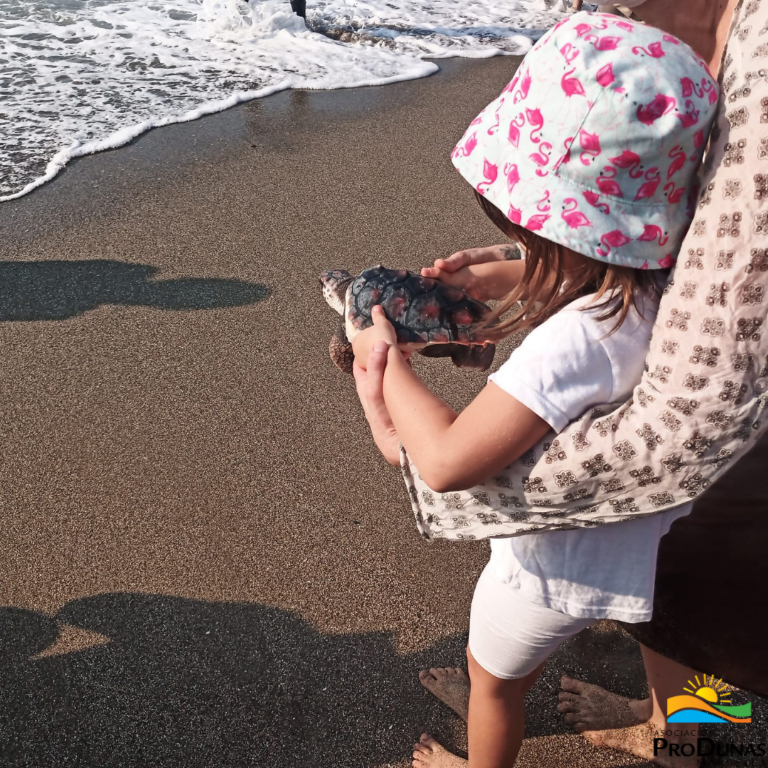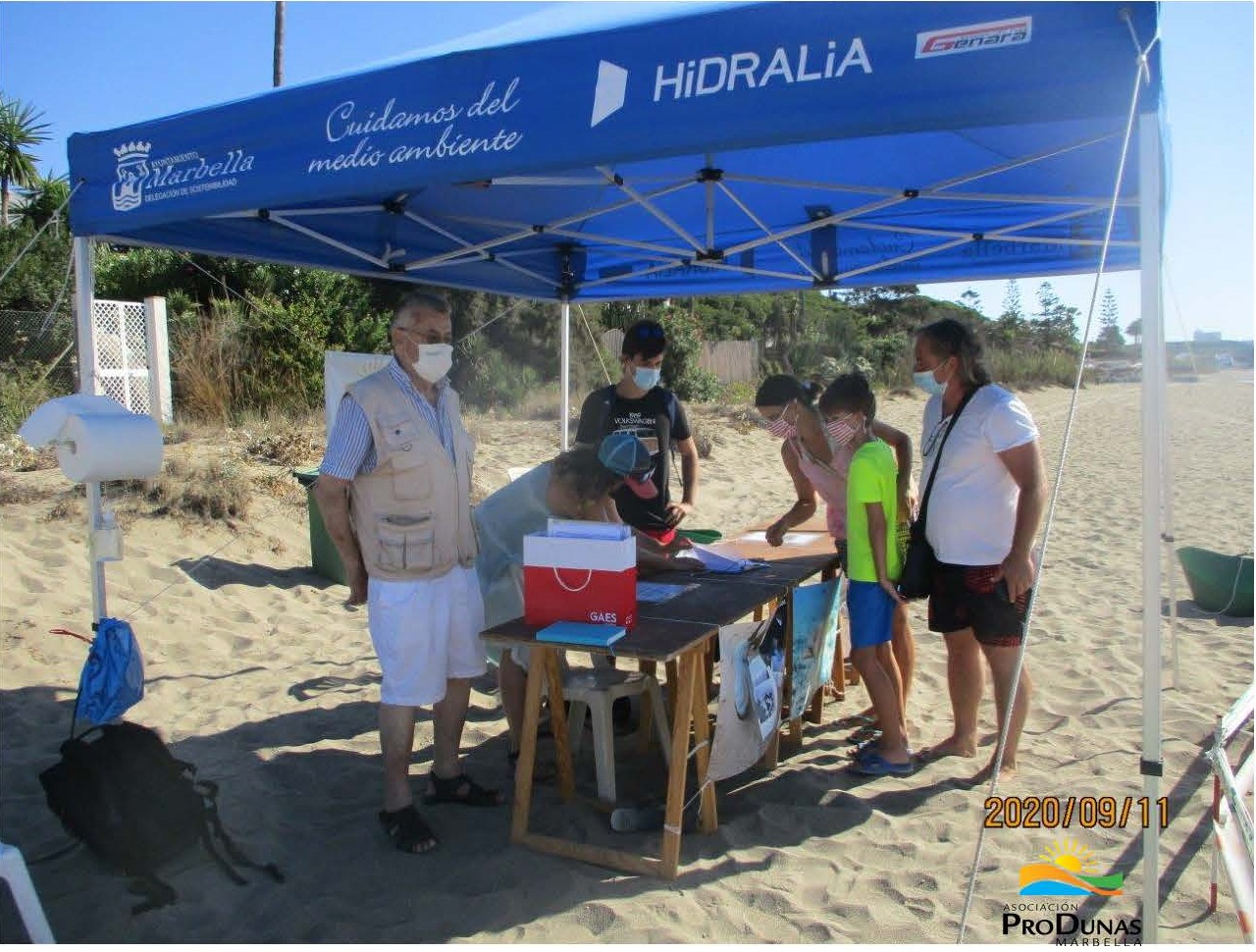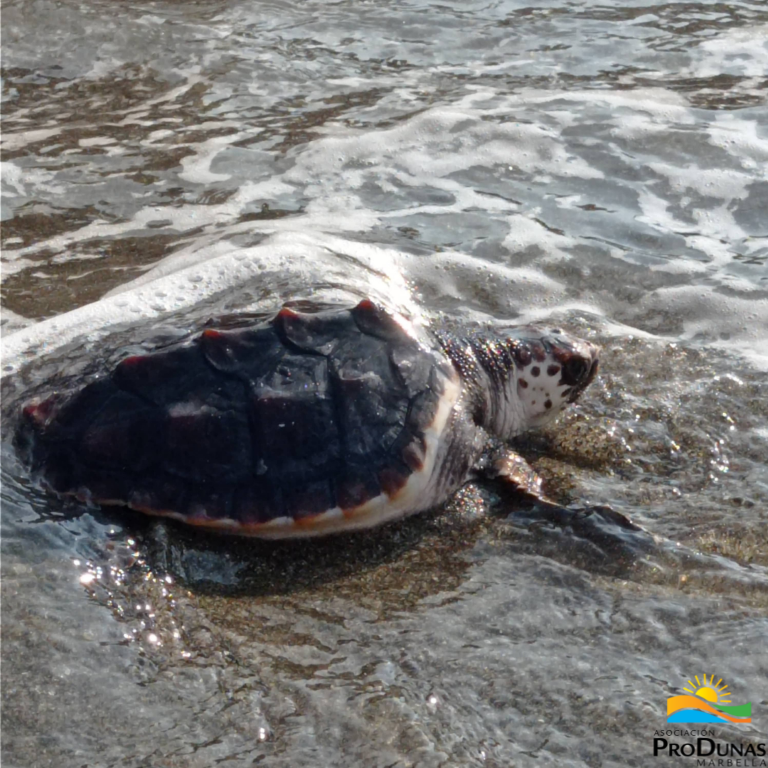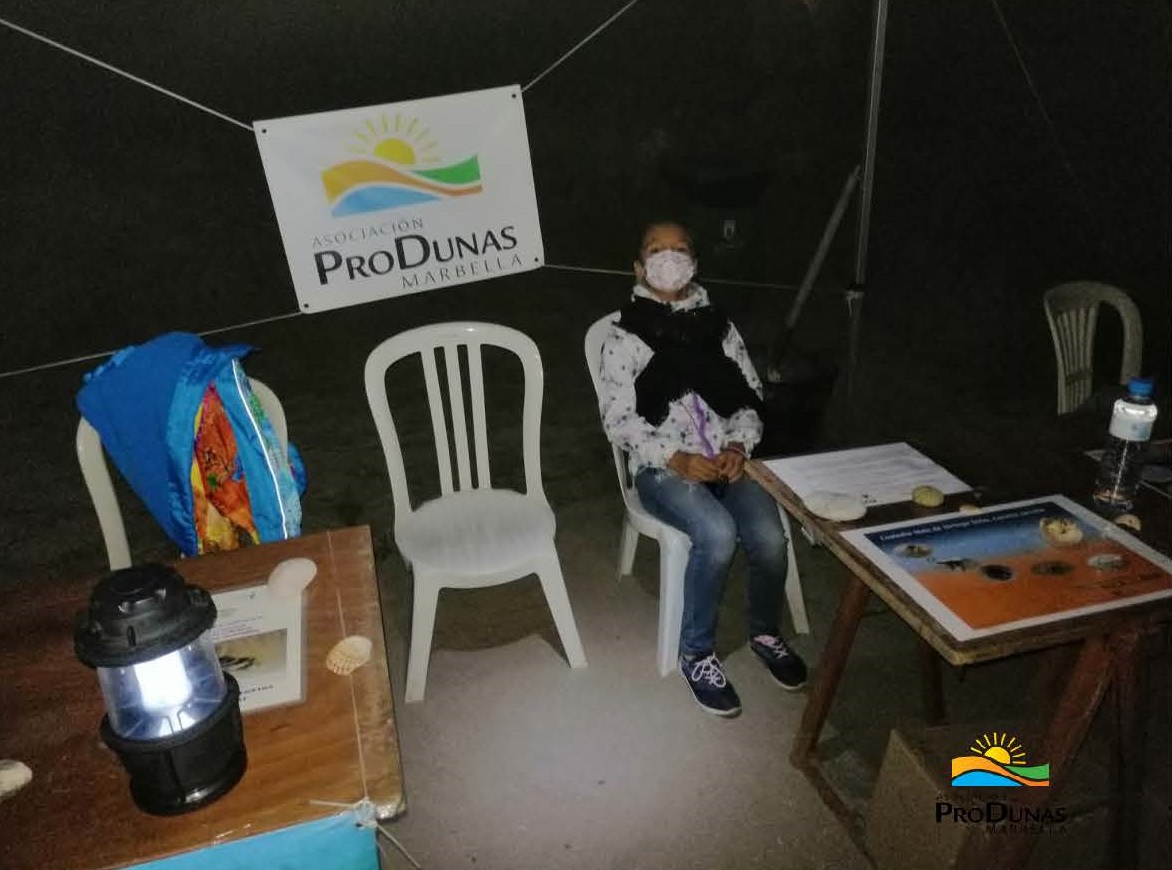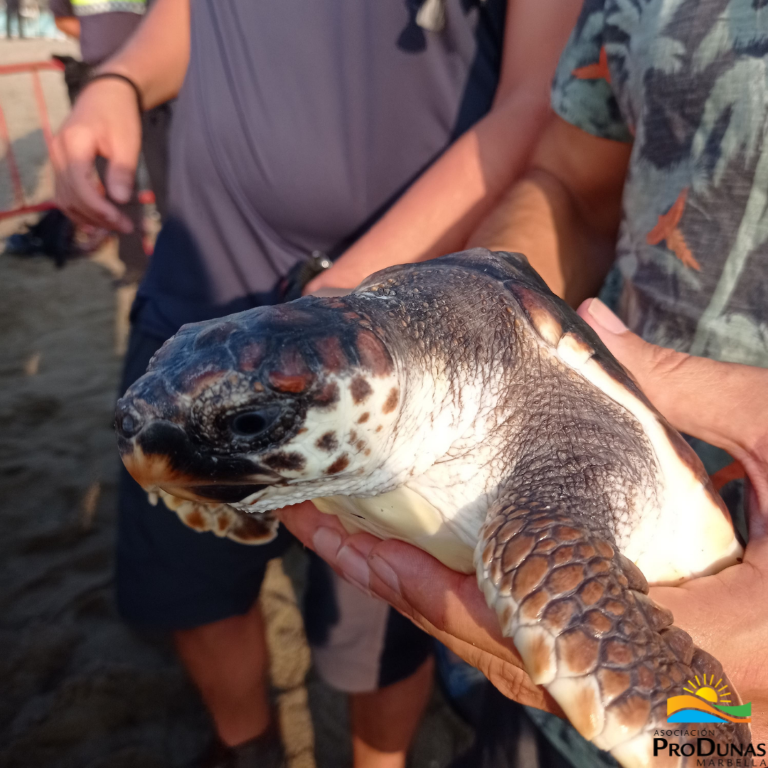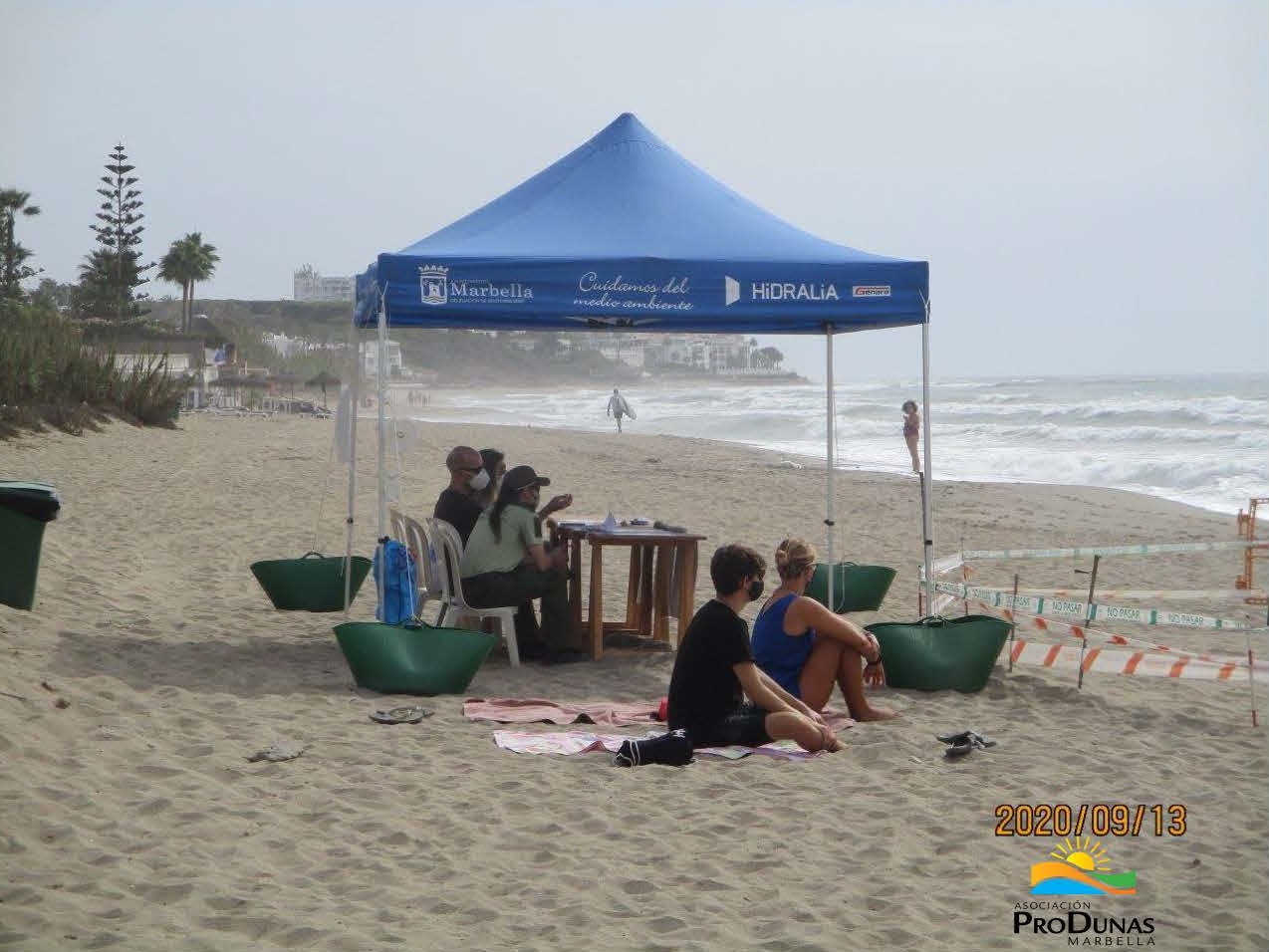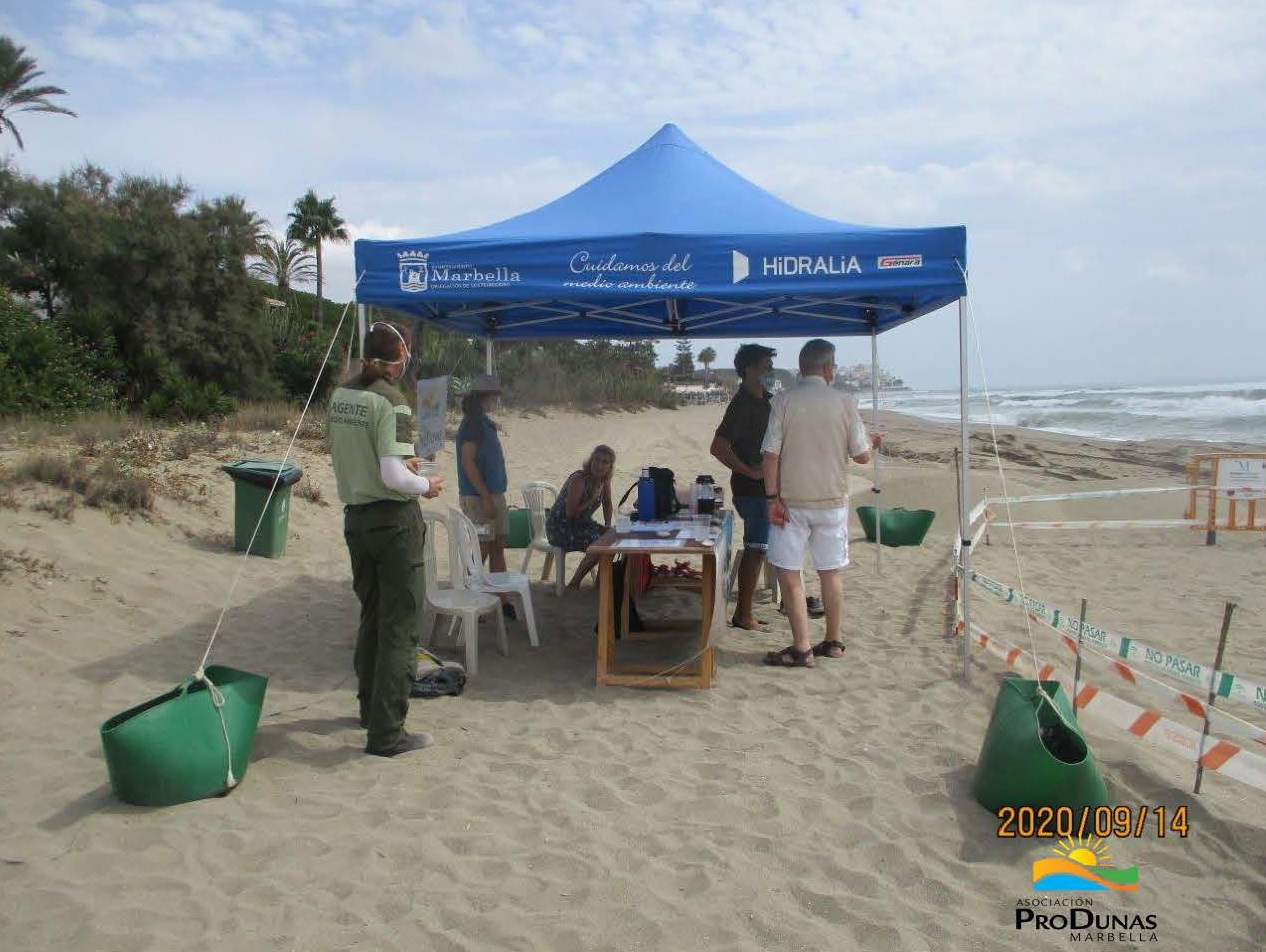SMALL SUMMER TALK WITH THE RTV TELEVISION AND ESTEFANÍA
19 July 2022: Talking about sea turtles on the Costa del Sol coastline
Jellyfish are part of the marine ecosystem and therefore play a role and are important. However, they are running out of predators and are becoming a problem for other marine species such as anchovies and sardines. Human activity, the warming of the oceans and the emission of pollutants are some of the causes of the proliferation of these animals.
What are jellyfish? It is one of the oldest organisms on our planet. They are planktonic organisms that live suspended in water (generally marine, although there are also some freshwater species). They have a very simple morphology, formed by a bell-shaped structure that houses the stomach and gonads. From this bell, known as an umbrella, the tentacles emerge. They are characterised by having stinging cells, the cnidocysts. These contain a poison that is injected into prey by means of a filament equipped with spines. Just by simple contact with the prey, the cells fire and “sting”.
Some live near the coast but the most abundant are concentrated in the open sea.
Jellyfish come and go with the seasons. In Spanish waters, they are most abundant between the beginning of spring and the end of summer. For the rest of the year they live as polyps on the seafloor or as resistance eggs in the plankton. Likewise, its presence on the beaches, as well as its abundance, depends on certain meteorological conditions: rains, winds, sea currents, etc.
For the vast majority of jellyfish, the coast is not their priority area but, due to currents and winds, these animals often end up reaching the areas swimmers prefer. When in these areas, the authorities must decide if the animals cause any kind of danger to the public and are responsible for the dealing with the issue. The person in the water should not take any action, always remembering that this is the jellyfish’s native habitat. They should not be removed from the sea because the natural state of these organisms must not be altered.
Both the proliferation of smacks (as groups of jellyfish are called) and their showing up close to the coast seem to have increased in recent years. Although the causes of these increases are yet to be confirmed, several factors seem to be interacting:
- Climatology: the decrease in winter rainfall and the increase in solar radiation seem to be related to the increase in jellyfish on the beaches in the summer. This phenomenon favours the coastal waters which because of less rainfall receive less inflow of continental freshwater. There is therefore less difference in salinity between coastal waters and those of the open sea where the jellyfish reproduce. Consequently, the winds can push them closer to the shore.
- Thus, the proliferation of Pelagia noctiluca has been known in the Mediterranean since the 1980s and, at least since then, the proliferation of this species coincides with the climatological conditions indicated. Likewise, the climatic factors that influence the increase in coastal temperature will be an indirect cause of the increase in jellyfish; if the coastal water has a temperature similar to that of the open sea, the jellyfish are carried by the currents towards the coast in a matter of days.
- Hydrocarbon pollution: it has been observed that in areas where oil spills have occurred, processes of degradation of hydrocarbons by bacteria begin, and these, in turn, serve as food for copepods, the main food for jellyfish.
- Overfishing: it is one of the most likely causes of the increase in jellyfish populations, but not of their reaching our shores more frequently. Its most immediate effect is the drastic decline in fish populations. Since fish and jellyfish compete for the same plankton food (copepods, crustacean larvae, etc.), the decline of their competitors favours the development of jellyfish populations.
The proliferation of jellyfish causes serious damage to how ecosystems work, and at the same time they are having important consequences on certain economic sectors, such as fishing and tourism.
- Damage caused to fishing: Jellyfish have a direct impact on the environment as they are predators who are in direct competition for the same food as some species of fish of commercial interest. By competing for the same resources but with an advantage, the chances of survival, especially of larvae and juvenile fish, decrease. Then these in turn are preyed on by the jellyfish themselves.
- Damage to tourism: Very often the Mediterranean coasts are affected by smacks of jellyfish driven onto the beaches and coves by the winds and sea currents. Their concentration in these areas can affect a significant number of people, all demanding medical attention.
What should I do if there are jellyfish on the beach?
- Don’t get in the water! Jellyfish never “attack”, they sting us because we bump into them. They can be pushed aside using the palm of your hand, slowly pushing them along touching only the top of their umbrella where there is a lower concentration of stinging cells. Do not touch dead jellyfish or their fragments as their stinging power lasts for up to 24 hours in dry conditions.
- If you spot jellyfish and there is no adequate signage displayed, notify the nearest beach surveillance post or call 112.
- The surf zone is a dangerous zone when talking about jellyfish, since many fragments, still able to sting, can be concentrated there.
- It is recommended that if you spend a long periods in the water you wear protective clothing (goggles, wetsuits, lycra…).
What injury does a jellyfish cause? The first sensation is an intense and stabbing pain, irritation on the skin and it can even cause a lesion. The most common injury is a skin condition that lasts days or even months, but can also cause tremors, fever, vomiting, cramps, etc. The lesion grows based on each person’s sensitivity to the poison and the number of jellyfish cells that have been involved in injecting it into your body.
What should I do if I get stung? If you have been stung by a jellyfish, the first thing is to get out of the water and remove the remains of the tentacles, if these are visible, from your skin. Do not wash with fresh water, always use sea water. Do not scratch or rub your skin with towels or other clothing. Apply something cold to the stung area. Never apply this directly but, for example, using a plastic bag containing ice cubes is a good idea. Keep this in place for about 15 minutes. In this way you will prevent the poison from getting into the bloodstream. Do not apply ammonia, vinegar (vinegar would prevent the firing of cells that are still in the skin, but it cannot do anything against the poison that has already penetrated your body) or urine. Disinfect the wound with iodinated alcohol 2 or 3 times a day for the following 48 to 72 hours. You must remember that normally there is an open wound which can become infected. Therefore, protect the wound with antihistamine ointments until it heals. If problems persist, go to a primary care hospital.
Currently, the most common species on our coast is Pelagia noctiluca. If you get stung by this jellyfish, don’t worry as it will not have a serious impact on your health. The sting of this jellyfish is a bit painful but it is not dangerous. If we see that the lesion is persistent and causes a lot of pain or dizziness, you should go to the doctor but this reaction is rare. It is a small jellyfish, translucent, bluish/reddish in colour. It has long tentacles and is found in smacks or groups.
Rhizostoma luteum, a very large and spectacular type of jellyfish has been seen in recent summers. The sting of this jellyfish is also mild and not dangerous to human health. We expect to see these jellyfish because we have seen their presence increase over the last few summers.
Although less frequently, the species Portuguese Man-of-War (Physalia physalis) has also shown up on our coasts. It is a colonial hydrozoan siphonophore organism of the Physaliidae family. The individual members that make up the colony specialise in keeping it alive; that is to say, each group of hydroids carries out a special job: the pneumatophore (part that floats or sails), the gastrozoids (digestion), dactylozoids (detection and capture of prey, and defence) and the gonozoids (which deal with of reproduction).
Its gelatinous sail allows it to travel the oceans driven by the winds, tides and sea currents. Numerous tentacles hang from the central body and are used to catch its prey. Despite its powerful poison, the Portuguese Man-of-War has several predators. When they show up it can deflate this very special air bag and let itself sink to the bottom of the sea giving the impression of having died.
Loggerhead and Hawksbill turtles are predators of these organisms, as their skin is too thick for the poison from the sting to affect them.
Normally the Man-of-War lives in the Atlantic Ocean, and is found only sporadically in the Mediterranean, so why do we have so many cases of sightings this year? The answer is simply meteorological.
Due to the physiognomy of this animal and its absence of motor organs that allow it to move wherever it wants, it goes wherever the wind takes it. The wind influence is much greater than that of the ocean currents themselves. The west winds this winter have marked its arrival. Luckily, the population of Portuguese Men-of-War is very sensitive to sea temperatures, radically decreasing its population when this exceeds 25ºC. In addition, since it is outside its habitat, the lack of food reduces its already poor chances of colonising our waters.
The poison of the Portuguese Man-of-War has neurotoxic, cytotoxic and cardiotoxic consequences on humans, producing very intense pain, and, on very isolated occasions, even cases of death have been recorded.
Author
Estefanía Espejo González
Marine Biologist – ProDunas
Do you want to receive our Newsletter?
Do you want to become a member or be our friend of the dunes?
Asociación ProDunas Marbella
The Association works tirelessly for the defence and preservation of the unique ecosystems that survive in the natural sand dune environments in the Province of Málaga; promotes the protection of native flora and small wildlife; promotes recovery, rehabilitation and conservation of interesting biodiversity of sand dunes areas in the municipality of Marbella.

